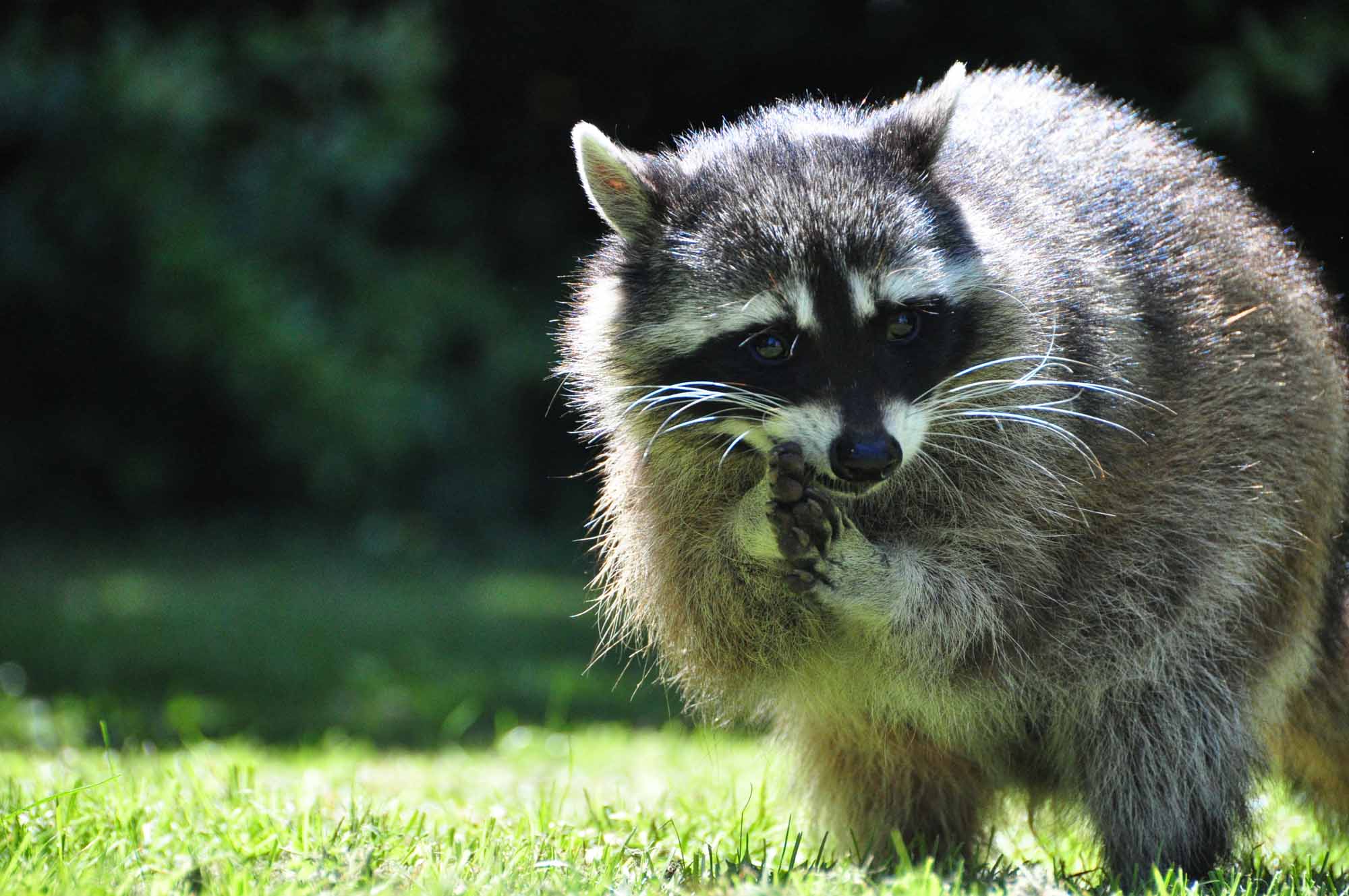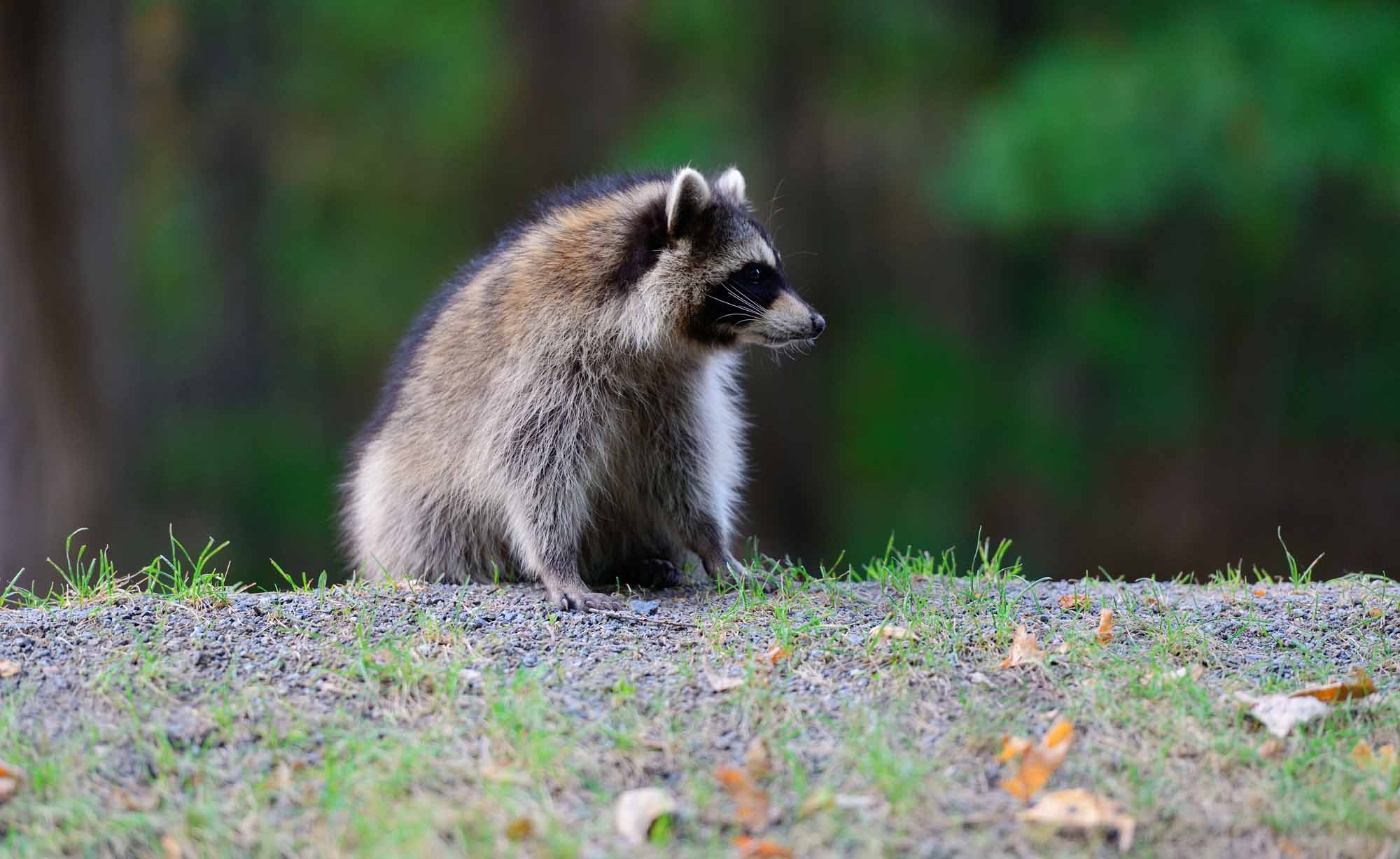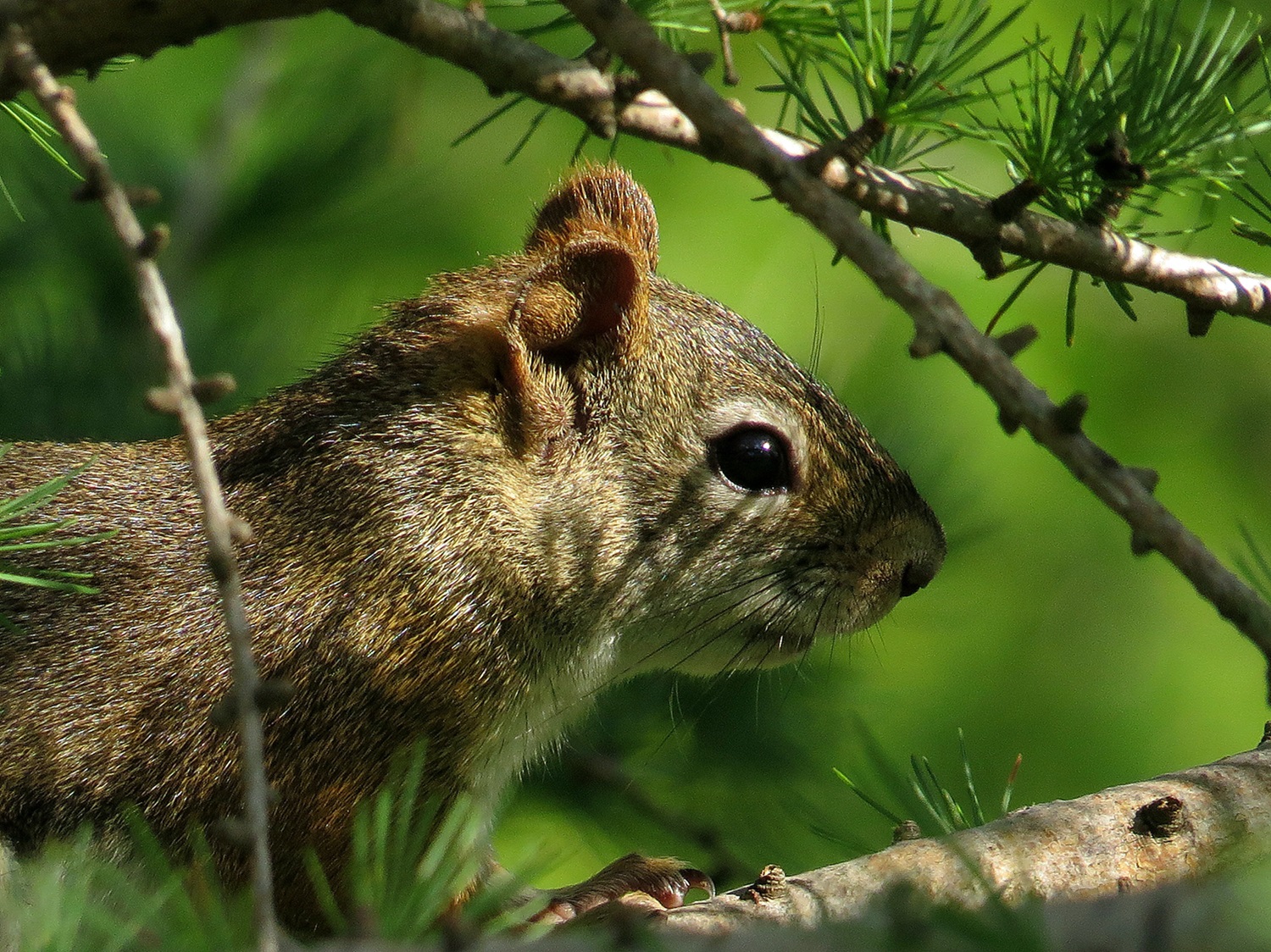The common raccoon (Procyon lotor) is a mid-size mammal distinguished by its black face mask and ringed tail. It is a member of the Procyonidae, a primarily tropical family of omnivores native to the Americas — and the only one of this family found in Canada. Raccoons are found in every province except Newfoundland and Labrador. A nocturnal species, it is highly adaptable and can survive in urban areas as well as wilderness habitats. Humans often consider raccoons pests due to their skill and persistence in raiding garbage bins, gardens and crops for food.

Etymology
The English word raccoon comes from the Algonquian language of the Powhatan confederacy of Indigenous tribes that lived in the Virginia area at the time of British colonization. The Algonquian words aroughcun and aroughcoune mean “one that rubs, scrubs, and scratches with its hands.” (See also Indigenous Languages in Canada.)
When raccoons were introduced overseas in Europe and Asia, several cultures adopted terms for the animal that mean “wash-bear.” This was based on the raccoon’s bear-like appearance and habit of seemingly washing its food before eating. Hence Waschbär in German, orsetto lavatore in Italian and araiguma in Japanese. The French adopted the name raton laveur (“washing rat”), and the same term is used in Canadian French. During the 18th century, people in New France used the term chat sauvage (“wild cat”) as another name for the raccoon. This name is still recognized in Quebec among older generations, but it is no longer used.
The humorous nickname trash panda has recently become popular on social media.
Take the quiz!
Test your knowledge of mammals by taking this quiz, offered by the Citizenship Challenge! A program of Historica Canada, the Citizenship Challenge invites Canadians to test their national knowledge by taking a mock citizenship exam, as well as other themed quizzes.
Physical Description
Raccoons are the largest of their family, Procyonidae, which consists of medium-sized mammals native to the Americas. This family includes coatis, kinkajous, olingos, olinguitos, ringtails and cacomistles, but the raccoon is the only member found in Canada.
Raccoons are stocky and measure about 60–95 cm long. On average, they weigh 5–12 kg, and males are heavier than females. Raccoons may gain up to twice their normal weight just before winter. Because raccoons do not hibernate, the accumulated fat stores help them survive the winter.
The colour of their fur varies from grey to brown, black and red.
Did you know?
Some raccoons are born with all-white colouring. These albino raccoons are rare, accounting for only about 1 in 10,000 births.
Raccoons are easily distinguished. They have long, bushy tails with black and tan rings. The dark fur around their eyes resembles a thief’s mask. This specific trait has contributed to the perception of raccoons as mischievous. A third unique raccoon trait is their paws. Their front paws look like human hands, and are just as dextrous and agile. Unlike humans, however, they do not have opposable thumbs. Their back paws are plantigrade, which means that raccoons walk on flat feet like humans do.
Behaviour

Raccoons organize themselves in fission-fusion societies, which is a term describing a group that merges and splits frequently throughout its environment. They can be seen in groups if good feeding and resting spots are found. In addition, raccoons may have common latrines or “toilets,” shared areas for urination and defecation.
Raccoons are nocturnal, hunting and foraging for food during the night. They often manipulate their food in water but do not strictly wash the items. Their sense of touch increases underwater, and they will rub food to remove unwanted parts, examine it, and then eat it. This behaviour is how they got their name in various languages.
Raccoons are one of the few wildlife species that have thrived despite human expansion. Those accustomed to urban settings are skilled at raiding waste bins in search of human leftovers. As opportunistic feeders, they are naturally curious. They will try to open any container or bin that contains food, and they often succeed in this task. This has become such a problem in Toronto, Ontario that the city introduced “raccoon-resistant” green bins in 2016. However, video captured by Toronto Star journalist Amy Dempsey in 2018 shows raccoons opening these containers with apparent ease.
Distribution and Habitat
Raccoons range from the southern half of Canada all the way to Northern Panama. Canadian ranges include the south coastal area of British Columbia and parts of the Okanagan Valley; almost all of Alberta excluding the Rocky Mountains; the southern halves of Saskatchewan, Manitoba, Ontario and Quebec; and the Atlantic provinces excluding Newfoundland and Labrador.
Did you know?
Several First Nations, from the Coast Salish on the West Coast to the Mi’kmaq on the East Coast, traditionally trapped and hunted raccoons for their pelts or as a supplementary source of food. Pelts were fashioned into clothing or traded with other peoples.
Since its introduction in Europe, the common raccoon can now be found throughout continental Europe, most notably in Germany and France. It was introduced in Japan starting in the late 1970s. Inspired by a popular television show, families imported young raccoons as pets and then often released them into the wild after they got older and unwieldy. Raccoons are now seen as an invasive menace in Japan.
Raccoons can live in any habitat as long as there is a source of water and food, and suitable shelter to build a den for resting and overwintering. Dens can be burrows, tree hollows, hollow logs, rock caves or abandoned burrows made by other animals. In cities and suburbs, suitable denning sites can be sewers, garages, trees, culverts and underneath porches. The most natural raccoon habitats are wetland areas (e.g., hardwood swamps and marshes), farmlands and forests. Raccoons are not particularly territorial. It is common for their home ranges to overlap.
Diet
Raccoons are opportunistic omnivores, meaning they will eat most plant and animal food sources available in their environment. This can include seasonal fruits, corn, nuts, bird eggs, insects, crayfish, clams, frogs, toads, worms, larvae, snails and human leftovers. Raccoons of different habitats have their own preferred food items.
Reproduction and Development
Male raccoons generally reach sexual maturity at about one year, and females usually a bit earlier. Breeding season is from February to June, varying from northern to southern populations. In Canada, breeding tends to take place in February and March, with babies born around May. Gestation, or the period of time a mother is pregnant, is roughly 63–65 days. In their southern range, a female will usually have up to four babies, called kits. In their northern range, including Canada, there can be as many as seven kits in a litter. Males do not play a role in raising young. Kits are born completely dependent on their mother, but they grow quickly. After two months, kits can be seen out of the nursing den, hunting and foraging with the mother. When ready, young males will disperse far from their mother’s home range, whereas young females tend to stay closer.
A raccoon’s lifespan is 3–5 years in the wild. Commons threats are hunting, trapping, car collisions, malnutrition and poisoning. Raccoons can be nuisances to farmers, who may kill raccoons on their property. In captivity (e.g., at a zoo), raccoons have lived as long as 21 years.
Relationship with Humans
Raccoons are often seen as pests because they will go anywhere they can find food. Raccoons can break into hen coops and eat eggs and chicks. They can damage vegetable crops by foraging through them. In cities and suburbs, raccoons can get into attics and garages and may damage household objects in their quest to find food.
Wildlife specialists discourage keeping raccoons as pets. In some places, this is even prohibited. Raccoons are not domesticated animals. Although baby raccoons may enjoy human company, they usually become aggressive towards humans as adults. They also require a lot of activity and can be destructive to home furnishings. There are wildlife rehabilitation centres that can take in orphaned or injured raccoons for eventual release into the wild.
Raccoons can carry rabies, a lethal virus, and transmit it by bites. Because there is no cure for rabies, people are urged to avoid raccoons whose appearance and/or behaviour seems abnormal. In addition, raccoons are greatly affected by another virus, canine distemper. They are also susceptible to feline distemper. These viruses don’t affect humans, but can be transmitted to pets, especially dogs, cats and ferrets (see Animal Disease).

 Share on Facebook
Share on Facebook Share on X
Share on X Share by Email
Share by Email Share on Google Classroom
Share on Google Classroom







